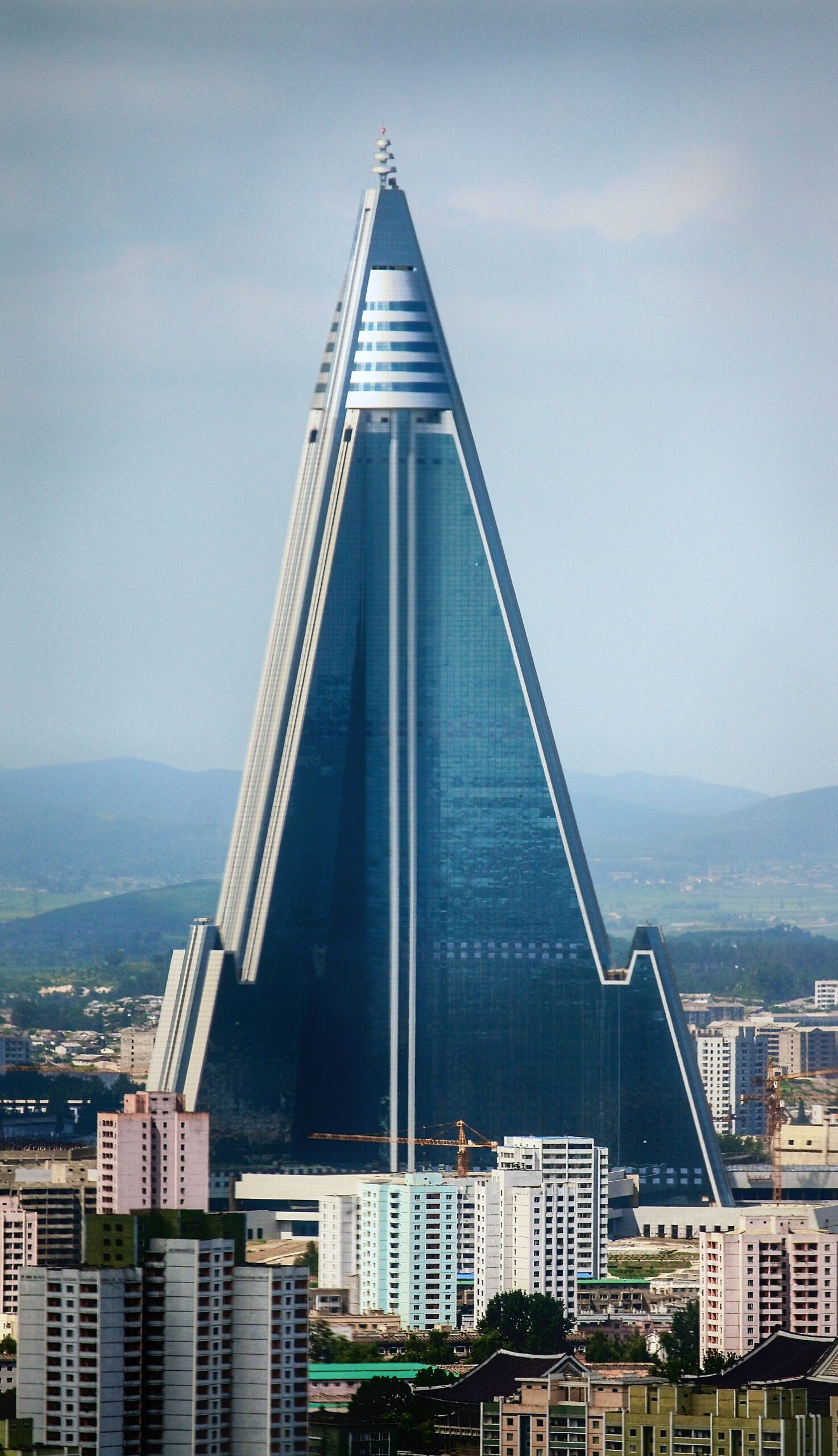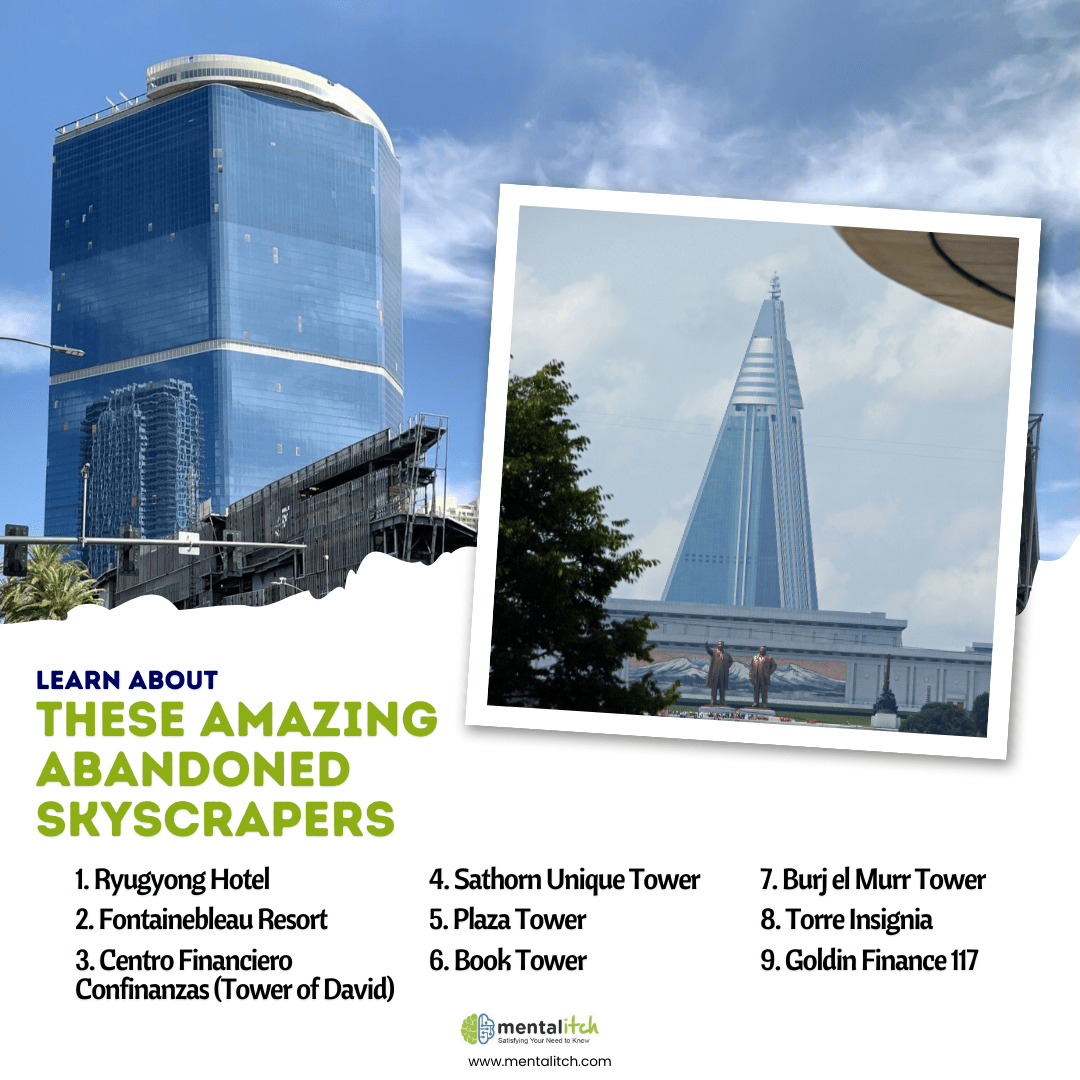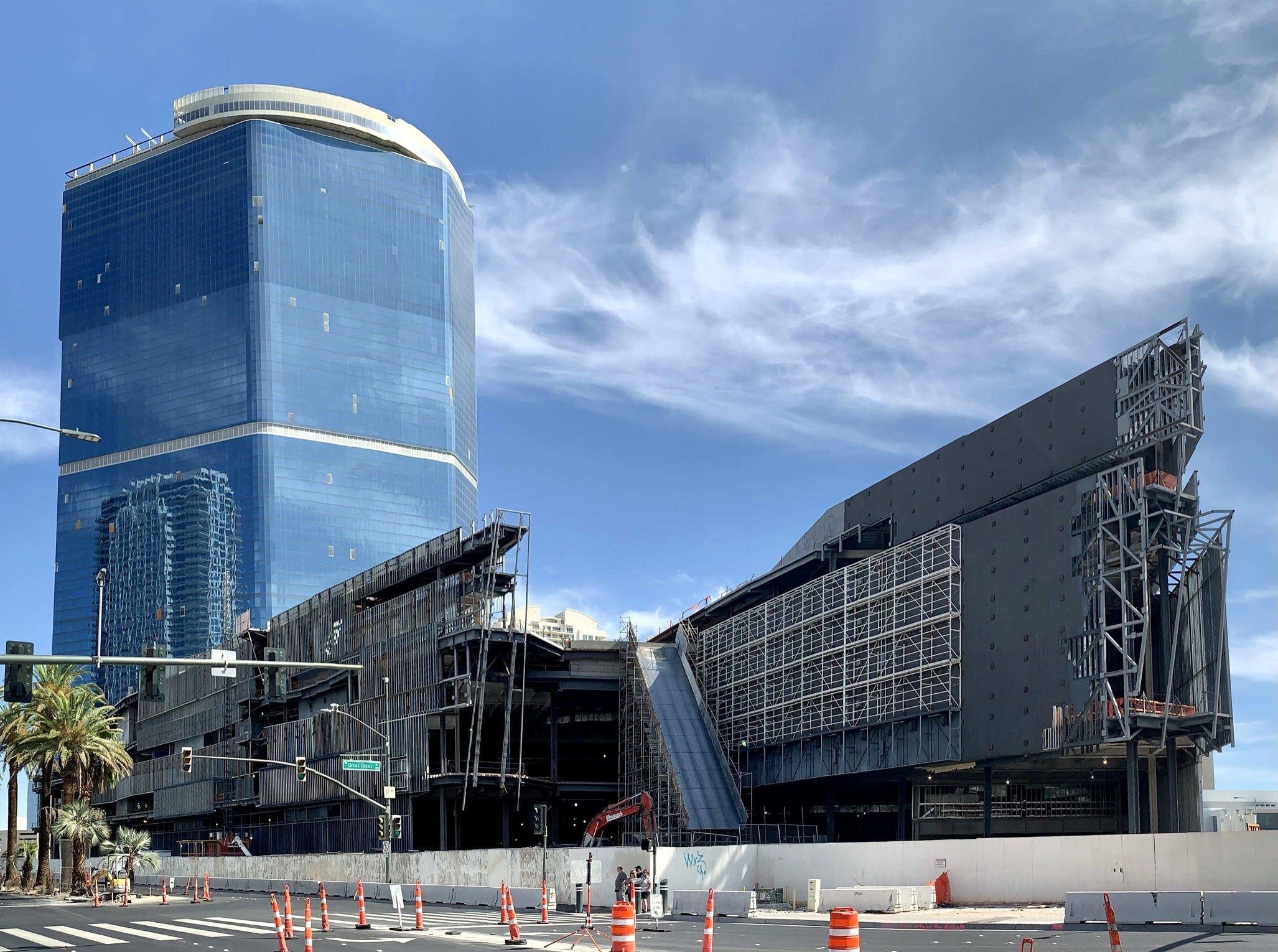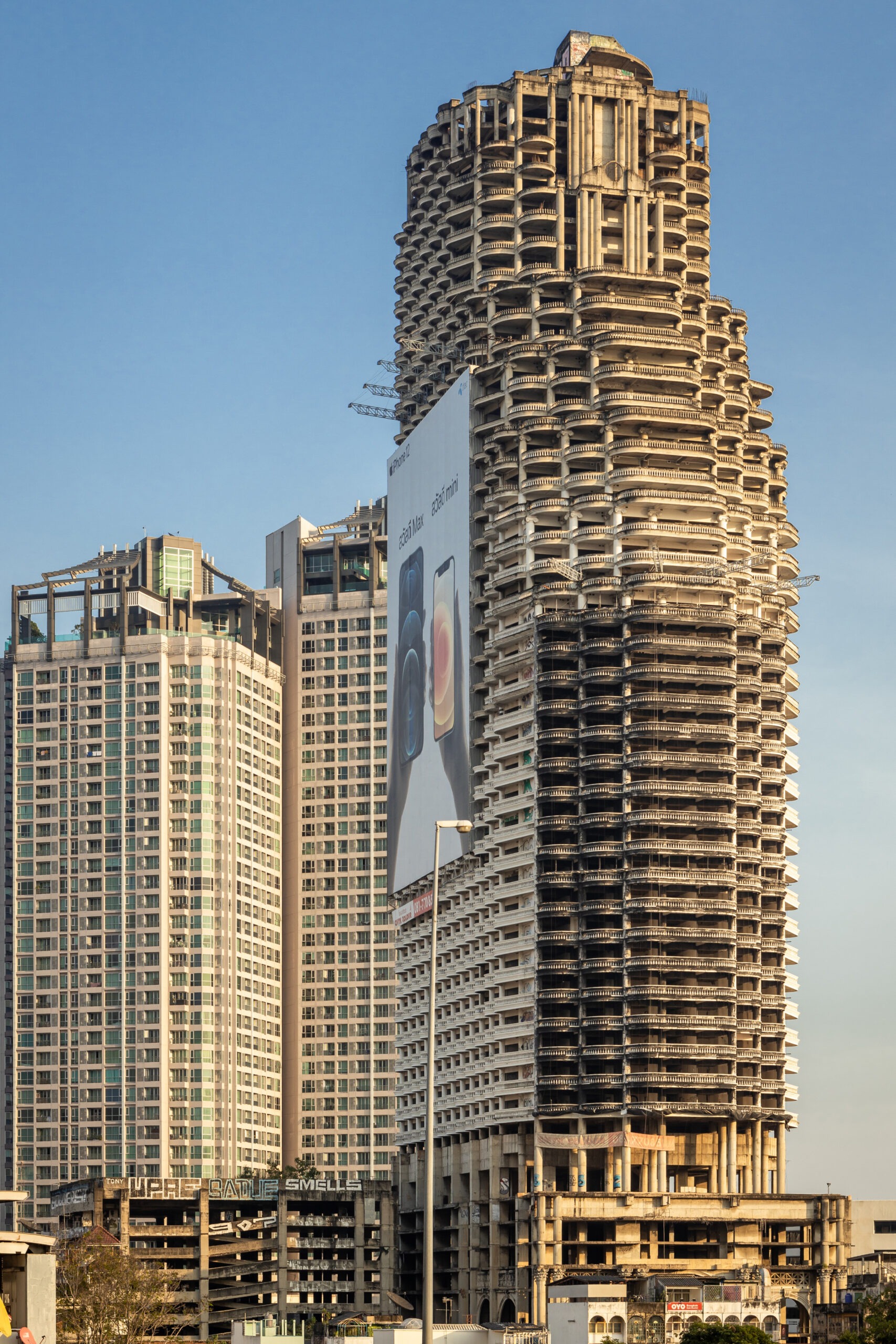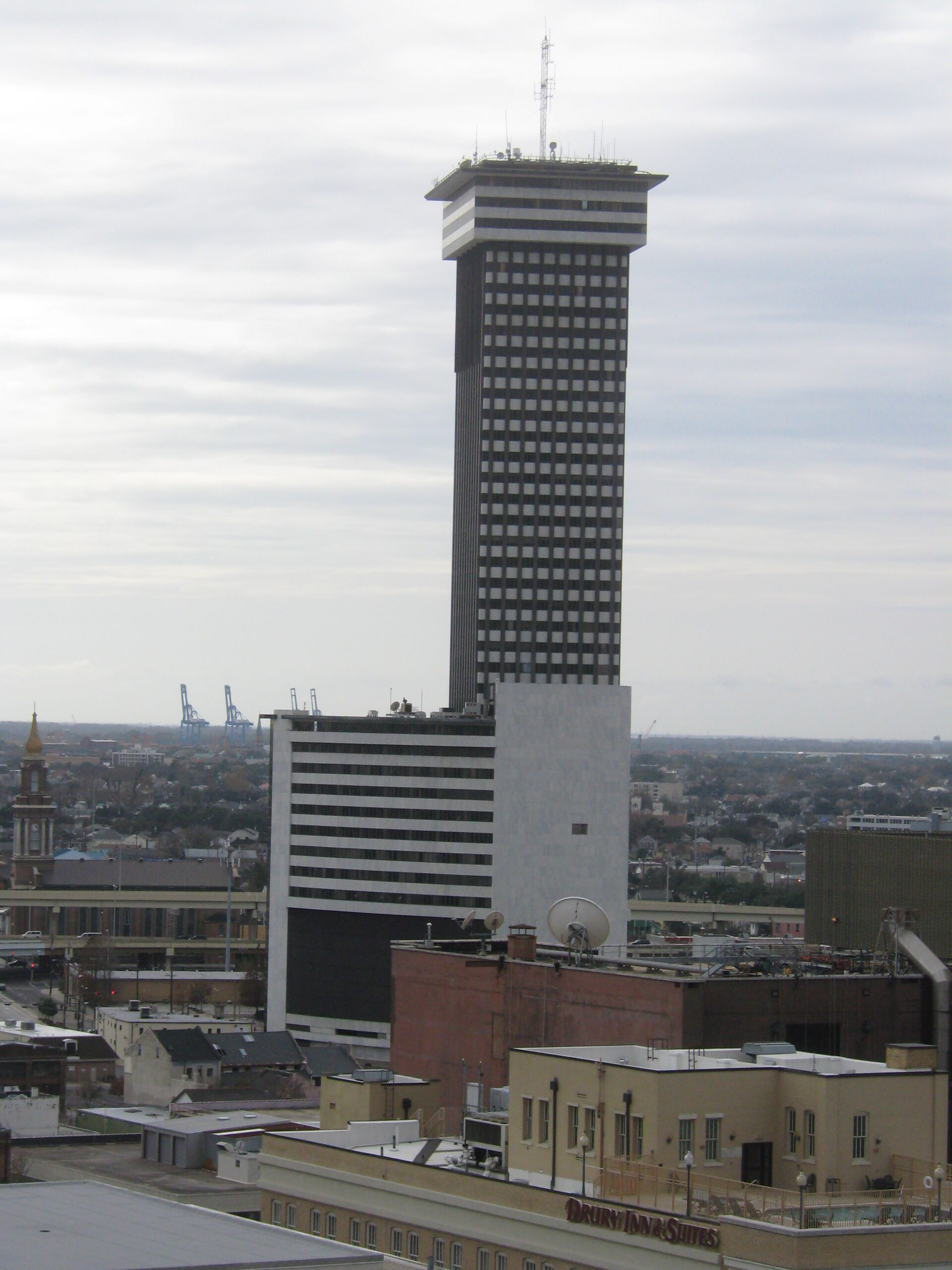Skyscrapers have always been symbols of human ambition and architectural marvels. However, not all skyscrapers stand the test of time. For various reasons, some of them are abandoned and left to decay. These abandoned skyscrapers tell stories of grandeur, economic downturns, and changing urban landscapes. Let’s explore some of these amazing abandoned skyscrapers that continue to captivate the imagination.
1. Ryugyong Hotel
The Ryugyong Hotel, also known as the Yu-Kyung Hotel, is an enormous pyramid-shaped skyscraper located in Pyongyang, North Korea. Rising to a height of 330 meters (1,080 feet) with 105 floors, it remains unfinished. The name “Ryugyong” translates to “capital of willows,” an old name for Pyongyang. It is also referred to as the 105 Building due to its number of floors. Originally intended to be a mixed-use development featuring a hotel, construction on the building began in 1987 but was halted in 1992 due to economic difficulties after the collapse of the Soviet Union.
By 1992, the construction had reached its full height, but the building lacked windows and interior furnishings. In 2008, work resumed, and the exterior was finally completed in 2011. Initially, the hotel was planned to open in 2012 to coincide with the 100th anniversary of Kim Il Sung’s birth, the country’s founding leader. However, a partial opening scheduled for 2013 was ultimately canceled.
In 2018, an LED display was installed on one side of the building, which serves as a platform for showcasing propaganda animations and film scenes. Despite its unfinished status and delayed opening, the Ryugyong Hotel stands as a distinctive landmark on the Pyongyang skyline, capturing the curiosity and fascination of observers worldwide.
2. Fontainebleau Resort
The Fontainebleau Las Vegas, originally known as The Drew Las Vegas, is a building project in Winchester, Nevada, on the world-famous Las Vegas Strip. The site spans 24.5 acres (9.9 hectares) and was previously occupied by the El Rancho Hotel and Casino and the Algiers Hotel. The Fontainebleau Las Vegas was initially announced in May 2005, with a goal of starting construction by March 2006 and opening the resort by 2008. Developed by Fontainebleau Resorts, owned by Jeff Soffer, it was intended to be a sister property to the Fontainebleau Miami Beach hotel.
Construction officially began in February 2007, with the hotel tower reaching its peak height on November 14, 2008. However, a legal dispute ensued in April 2009 when the financing group refused to continue funding, leading to a slowdown in construction. Eventually, the project filed for Chapter 11 bankruptcy in June 2009, resulting in a suspension of construction. At the time, the project was about 70% complete, with an opening scheduled for October 2009. The Fontainebleau was designed to feature a 95,000 square-foot (8,800 square meters) casino, 2,871 hotel rooms, 1,018 condo hotel units, and various amenities. The hotel tower is 68 floors tall and 737 feet tall, making it the tallest building in Las Vegas in Nevada, excluding the nearby Strat observation tower.
In 2010, the project was acquired by Carl Icahn during bankruptcy proceedings but remained dormant. In 2017, the Witkoff Group and New Valley LLC purchased the unfinished resort for $600 million. In 2018, they partnered with Marriott International to rebrand and open the resort as The Drew Las Vegas. The revised plans included a casino and three hotels, providing a total of 3,780 rooms, while the condominium component was abandoned. The name “The Drew” was chosen in memory of Steve Witkoff’s late son. The target opening for The Drew was initially set for 2022, but construction was halted in March 2020 due to the COVID-19 pandemic.
In 2021, Jeff Soffer, through his company Fontainebleau Development, repurchased the project with Koch Real Estate Investments as a partner. The resort was rebranded as Fontainebleau Las Vegas, and construction resumed in November 2021. The anticipated opening date for the resort is now December 2023, featuring a 173,000 square-foot (16,100 square meters) casino and 3,644 hotel rooms.
3. Centro Financiero Confinanzas (Tower of David)
The Confinanzas Financial Center, also referred to as the Tower of David, is an unfinished and deserted skyscraper located in Caracas, the capital city of Venezuela. Standing as the third tallest skyscraper in the country, surpassed only by the twin towers of the Parque Central Complex, construction began in 1990 but was abruptly stopped in 1994 due to the Venezuelan banking crisis. Presently, the building remains in an incomplete and abandoned state. Furthermore, it sustained damage from two earthquakes that occurred on August 21 and 22, 2018.
The tower situated in downtown Caracas has earned the moniker “Torre de David” in honor of its primary investor, David Brillembourg, who tragically passed away from cancer in 1993. Following the banking crisis of 1994, the government assumed control of the building, resulting in its incomplete status to this day. The structure lacks essential amenities such as elevators, electricity, running water, balcony railings, windows, and even walls in certain areas. The complex encompasses six separate buildings: El Atrio, which serves as the lobby and conference room; Torre A, with a height of 171 meters and 45 stories, still featuring a heliport; Torre B, Edificio K, Edificio Z, and twelve levels of parking.
In an attempt to resolve the situation, the Venezuelan government endeavored to auction off the complex in 2001. However, no offers were made during the auction process, leaving the fate of the building in uncertainty.
4. Sathorn Unique Tower
Located in Bangkok, the capital city of Thailand, the Sathorn Unique Tower stands as an incomplete skyscraper. Originally designed as a high-rise condominium complex, its construction was abruptly halted during the 1997 Asian financial crisis, leaving the building approximately 80 percent finished. Today, it stands out as one of the notable abandoned structures in Bangkok, drawing the attention of urban explorers and enthusiasts.
The Sathorn Unique Tower has become a prominent fixture among the city’s many derelict buildings. Its distinct and unfinished appearance captivates the curiosity of those intrigued by the allure of exploring forgotten spaces. The tower stands as a testament to the economic challenges faced during the Asian financial crisis, which brought construction to a standstill.
Although left in a state of abandonment, the Sathorn Unique Tower continues to hold a certain allure, attracting urban adventurers who are drawn to its incomplete grandeur. As one of Bangkok’s most recognizable derelict buildings, it serves as a reminder of the city’s architectural history and the impact of economic downturns on construction projects.
The Sathorn Unique was originally intended to be an impressive luxury condominium tower with 47 stories and 600 units. The project was conceptualized and developed by Rangsan Torsuwan, a renowned architect and real estate developer who also designed the State Tower, the sister building of Sathorn Unique. In 1990, the venture was launched under the ownership of Sathorn Unique Co. Ltd., with significant financial backing from the Thai Mex Finance and Securities Company. The construction commenced that same year, with Si Phraya Co. Ltd. appointed as the primary contractor.
However, in 1993, Rangsan found himself embroiled in a controversial and protracted legal case. He was accused of planning the assassination of Praman Chansue, the President of the Supreme Court, although the alleged crime was never carried out. Rangsan was eventually convicted in 2008 but later acquitted by the Court of Appeals in 2010. This extended legal battle had a detrimental effect on his ability to secure financial support for his projects. Consequently, the construction of the Sathorn Unique encountered numerous delays due to insufficient funds.
The situation worsened with the onset of the Asian financial crisis in 1997, which caused a collapse in Bangkok’s real estate market. The finance companies that had previously provided funding for the project went bankrupt and were subsequently liquidated. This led to a citywide cessation of construction projects, including Sathorn Unique. While many of these unfinished high-rise buildings, such as the State Tower, were eventually completed as the economy recovered, Sathorn Unique remained one of Bangkok’s notable “ghost towers.” Despite efforts by Rangsan’s son, Pansit Torsuwan, who joined his father’s firm in 2004 and engaged in negotiations and refinancing attempts, the project remained unfinished.
Rangsan’s unwavering insistence that the building be sold at a price enabling the repayment of its original buyers in full rather than declaring bankruptcy and dissolving the company contributed to the prolonged state of Sathorn Unique. This unique circumstance distinguished it from other unfinished projects in the city.
5. Plaza Tower
Situated in New Orleans, Louisiana, the Plaza Tower, also known as Crescent City Towers and Crescent City Residences in a previously unsuccessful redevelopment plan, stands as a 45-story skyscraper. Designed in a modern architectural style by Leonard R Spangenberg, Jr. & Associates, it reaches a height of 531 feet (162 meters). It is the third tallest structure in New Orleans and the state of Louisiana, and is located in the Central Business District (CBD).
Regrettably, the Plaza Tower has remained unoccupied since 2002 due to significant environmental concerns. The building has been plagued by issues such as toxic mold and asbestos, rendering it unsafe for habitation. As a result, efforts to utilize the tower or implement redevelopment schemes have been hindered, leaving the structure unused and unattended.
6. Book Tower
The Book Tower, situated at 1265 Washington Boulevard in Downtown Detroit, Michigan, is a magnificent skyscraper encompassing 38 stories and standing at a height of 145 meters (476 feet). It resides within the Washington Boulevard Historic District. As an extension to the existing Book Building, construction on this Italian Renaissance-style structure began in 1916. It reached completion a decade later, securing its position as the tallest structure in Detroit during that era. The renowned American architect Louis Kamper was responsible for the building’s design. Kamper was highly active in and around Detroit and Wayne County, Michigan, leaving his architectural imprint on the region.
With its signature green copper roof, reminiscent of the nearby Westin Book Cadillac Hotel, the Book Tower boasted retail and gallery spaces on its first and second floors, while various businesses occupied the remaining floors. However, in 2009, the last tenant closed its doors, leaving the Book Tower vacant until Bedrock acquired it in 2015. Under the guidance of Bedrock, an extensive restoration project unfolded over the course of seven years. This undertaking resulted in a complete revitalization of the tower, transforming it into a vibrant space featuring residential units, a ROOST apartment/hotel, an event venue, and a mix of commercial uses.
7. Burj el Murr Tower
View this post on Instagram
Burj El Murr is a notable skyscraper located in Beirut, Lebanon. “Burj El Murr” means “Tower of Bitterness” in English. It is a residential building that was constructed during the Lebanese Civil War in the 1970s. Designed by the Lebanese architect Fawzi Peichoto, the tower symbolizes the war’s impact on the cityscape.
Burj El Murr was originally intended to be a luxury apartment complex, but due to the war, it never reached its full potential. The building’s construction was interrupted and remained incomplete, with only the lower floors being finished. Nevertheless, despite its unfinished state, the tower stands as an imposing structure, reaching a height of approximately 140 meters (460 feet) and comprising around 45 floors.
Over the years, Burj El Murr has gained recognition for its distinctive appearance and the scars left by the war. The bullet-riddled exterior serves as a reminder of the conflict that ravaged the city. Today, the tower stands as a prominent landmark in Beirut, capturing the attention of both locals and visitors interested in the city’s history and architectural remnants from the civil war era.
8. Torre Insignia
Torre Insignia, commonly known as Torre Banobras and the Nonoalco Tlatelolco Tower, is a Mario Pani Darqui architectural masterpiece. Situated at the intersection of Avenida Ricardo Flores Magón and Avenida de los Insurgentes Norte, within the Tlatelolco housing complex in Mexico City’s Cuauhtémoc district, this building holds historical and cultural significance.
Upon its completion in 1962, Torre Insignia stood as the second tallest structure in Mexico, just behind the iconic Torre Latinoamericana. While the tower is currently undergoing renovation and not in active use, it remains a prominent landmark in the Tlatelolco area, standing as the tallest building in the vicinity and the third tallest along Avenida Insurgentes.
Initially serving as the headquarters of Banobras, the building features a distinctive triangular prism shape and a sturdy reinforced concrete frame. It has undergone remodeling on multiple occasions and is recognized as one of the city’s architectural gems. It is home to the world’s tallest carillon, boasting an impressive collection of 47 bells crafted by Petit & Fritsen. With a height of 127 meters (417 feet) and 25 floors, Torre Insignia leaves an indelible mark on the Mexico City skyline.
This skyscraper has become an iconic symbol of the city, particularly along Avenida Insurgentes Norte. The silhouette of Torre Insignia is proudly showcased on the logo of the nearby Metro Tlatelolco station, which is conveniently situated on Avenida Manuel González.
The total floor area of the tower spans approximately 22,033 square meters (236,806 square feet), with a notable surface area of 7,716 square meters (83,056 square feet).
9. Goldin Finance 117
View this post on Instagram
Goldin Finance 117, also called China 117 Tower, is an incomplete skyscraper in Xiqing District, Tianjin, China. With its construction commencing in 2008, the tower reached its structural peak in 2015, towering at a height of 597 meters (1,959 feet). The building boasts an impressive 128 stories, out of which 117 were designated for residential, hotel, and commercial purposes, inspiring its distinctive name.
However, despite the progress made, the construction of Goldin Finance 117 faced significant setbacks, experiencing two periods of suspension. As of June 2023, the tower stands as an unfinished structure, devoid of occupants and awaiting its completion.
The existence of Goldin Finance 117, along with other unsuccessful high-rise projects in China, led to the government imposing a ban on the construction of buildings surpassing the height of 500 meters (1,640 feet). Consequently, if Goldin Finance 117 ever reaches its intended completion, it will mark the conclusion of China’s era of constructing towers exceeding 500 meters, at least for the foreseeable future.
Goldin Finance 117 symbolizes both the ambition and challenges faced in the realm of skyscraper construction in China. Despite its current state of incompleteness, the tower stands as a testament to the country’s architectural endeavors, leaving a lasting impression on the cityscape of Tianjin.
Conclusion
Abandoned skyscrapers possess a certain allure, as they stand as reminders of human ambition and the unpredictability of urban development. These structures tell tales of economic challenges, changing priorities, and the resilience of communities. While they may be abandoned and left to decay, they continue to fascinate photographers, historians, and urban explorers. Whether it is the Ryugyong Hotel, the Tower of David, or the Burj el Murr Tower, these abandoned skyscrapers showcase the complex relationship between architecture, society, and the passage of time.
